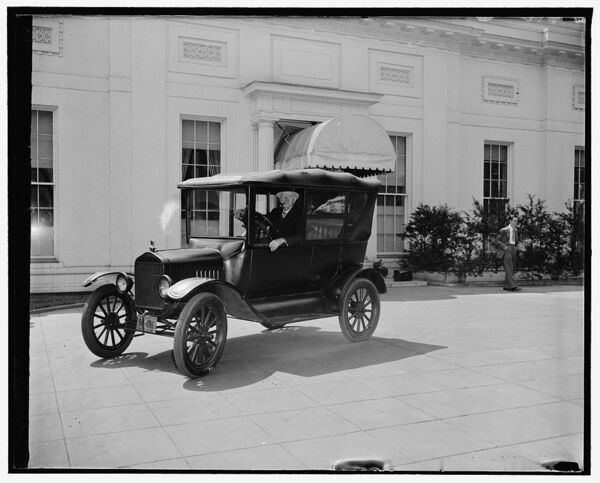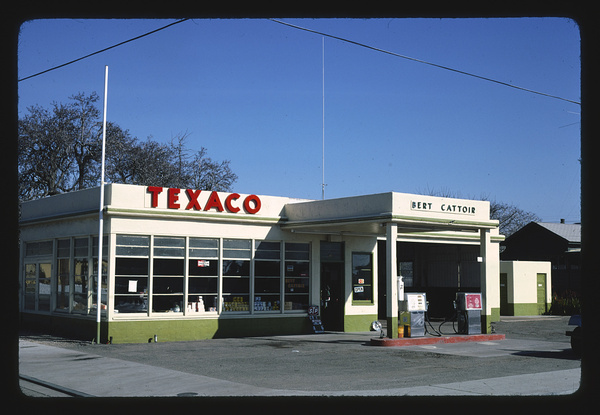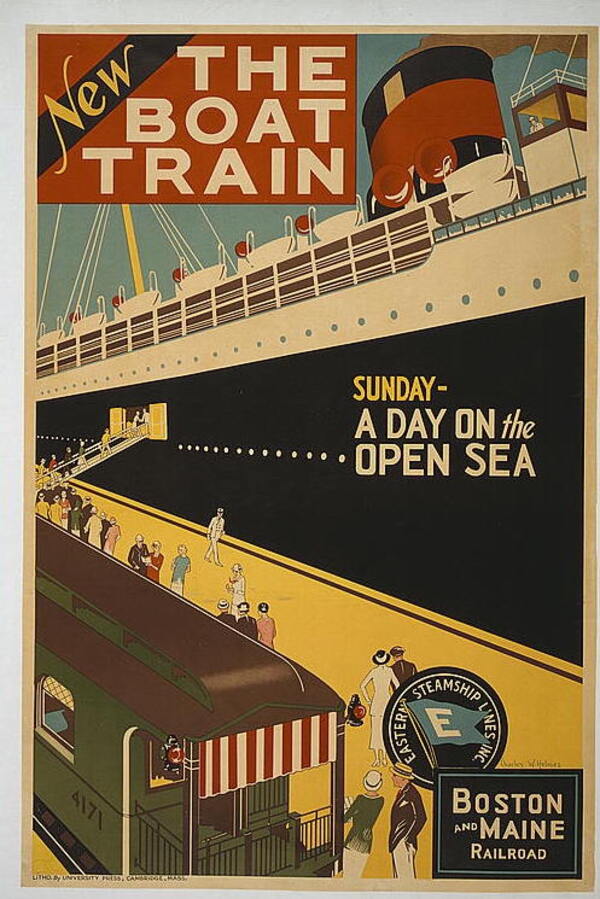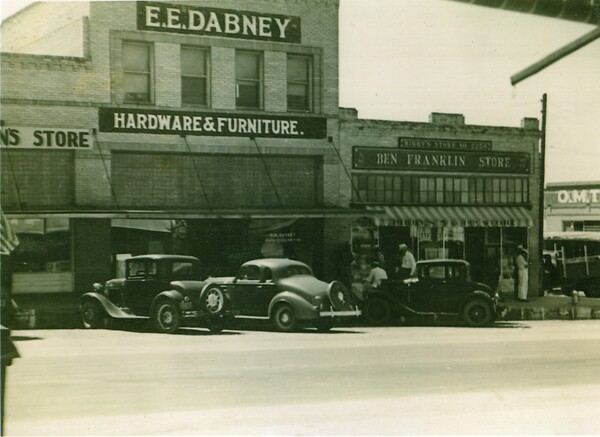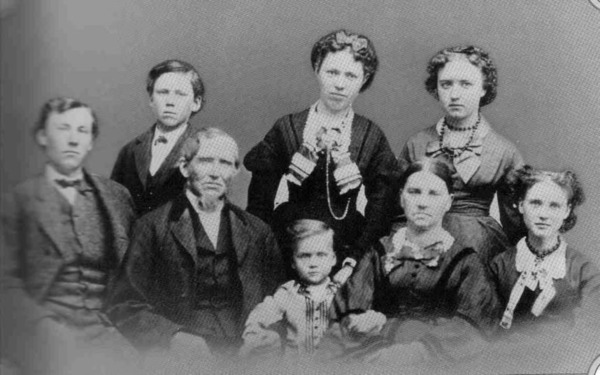We LOVE photos of old kitchens, but from 1860-1900, there are precious few available. This got us wondering why, which led to exploring how kitchens have evolved over time. The following 23 photos and illustrations give a quick history of how the kitchen evolved from 1860-1970. We hope you enjoy!

This 1874 lithograph shows how an early kitchen functioned in a wealthy home. This was an atypical setup, as you see running water and a hybrid fireplace/oven in place. Indeed, during most of the 1800s, there simply weren't kitchens in the home, but rather the fireplace hearth was the center of all cooking. However, when cast iron stoves became available in the 1850's, this separated the notion of a 'living room' off and the stove became the cooking spot.
The American Woman's Home
The notion of a 'kitchen' came about due to a book by Catherine Beecher and her sister, Harriet Beecher Stowe. In 1869, the two sisters published a revised version of The American Woman's Home. Among its many ideas were an initial layout for a kitchen as well as a set of sketches for how various goods and ingredients could be stored in an efficient manner.

Catharine Beecher's design for kitchen efficiency started with ergonomics to make storage and retrieval easier. This was a revolutionary concept at the time, and didn't take hold for many years to come, however!
The Stove as the Center of Everything
The following photos show how the cast iron stove (and cast iron kettles, pans, etc.) became the center of what would eventually become known as the kitchen.

This amazing photo from the BiblioArchives in Canada shows the interior 54 Main Street in Ottawa, residence of James Ballantyne. Here we see how the sitting area has already been separated and some primitive storage of ingredients and kitchen tools began to have their own space.

Here's an early photo from the late 1890s of a Niagara Stove Co Stove set up in the kitchen. This photo is interesting as it marks the first time we see a stove set against a wall with the pipe going up along it. At this point, the stove morphed from a dual cooking/heating source to something reserved for cooking.

This early photo shows the inner workings of the stoves, which evolved quite a bit around this time.
The Kitchen Becomes a 'Thing'
As more homes installed homes and had access to running water and electricity, people began spending more time in the kitchen. Because of this, people needed to develop places to the growing bounty of utensils, ingredients, and other kitchen wares.

We love this photo from around 1900 showing the lady of the house enjoying her new stove.

This photo shows an early cabinet that was built to keep the kitchen stuff organized, while still giving a surface upon which to mix, cut, and prepare the food.

This lovely photo from around 1900 shows another version of an early cabinet with a larger space for actually spending time in the kitchen. This house even has a rocking chair. And so the 'kitchen' started becoming its own room and new houses all had one built.
Bring on the Efficiency: Introducing the Hoosier Cabinet
In 1899, the Hoosier Cabinet Company sprung up with the amazing idea of putting EVERYTHING needed to cook in to one standalone cabinet that could be set next to a stove and the sink.

An early ad for the Hoosier Cabinet advertises how the cabinet saves miles of steps that were formerly between the barn, pantry, shed, and well. It was a powerful idea that got ahead of the cultural shift that moved cooking from a job to something that could be a pleasure.

Though there are few remaining cabinets from those early days of the Hoosier Cabinet Company, these photos above give you a sense of what some of the early models looked like. Over the years, these cabinets (and clones) would show up in households across America.

The Hoosier evolved quickly over the coming years and so did the ads. The cabinets even began coming with pre-installed containers and recipes in the doors!
Moving Toward Integrated Efficiency
Before the Hoosiers reached mass adoption, various companies came together to promote an idea of an integrated, efficient kitchen. The following two photos from the 1906 edition of Craftsman Magazine show a view of a model kitchen.

Here we see one side of a model kitchen where the large sink and preparation area is set up with some basic storage above it. During this time, the sink was typically a large porcelain monster like the one you see here. This is why we have the phrase "Everything but the Kitchen Sink!" because it was such a heavy monstrosity.

Another image from Craftsman Magazine shows the cooking area and pot/pan storage. This picture gives you a great sense of why the Hoosier cabinet caught on so well - it was a total bear to have all those pots and pans hanging from ceilings and shelves!
These photos also give you a sense of how there started to be a 'flow' to kitchen design. They were only missing one thing, though: Cabinets!
Cabinets! Give me ALL of the Cabinets!
From 1900-1920, many families were choosing to stay in smaller homes, and this meant that things like the Hoosier (And Cabinets!) became more important, because they simply didn't have space for all of those wall hangings. Beyond this, as families grew, their need for various types and quantity of dishes grew, so the cabinets became even more necessary.

Here we see Margaret Ober, a singer with the The Metropolitan Opera, in 1914 showing off a rib roast she's made in her kitchen. Look at all the cabinets!

This illustration shows what a modern kitchen looked like in rare upper-class homes around 1911. You'll notice that while the entire room now has a nice flow to it, each of the areas (sink, stove, cabinets, etc.) are all still standalone. This photo does show how the kitchen was beginning to become a room that may be seen by guests and family members alike. The cabinets became display cases just as much as storage!

Another interesting shift that was happening around the time is that cooking was starting to become a family affair, as we see in this 1915 photo.
Moving Toward "Built In" vs. Standalone
As the kitchen became more important, home builders began considering how they could make many of these standalone items included in the home build itself.

A display for a modern Efficiency Kitchen in 1917. Here we see how the shelving, cabinetry, and lighting for a kitchen started to move toward becoming part of the space vs. an element inside it.

This early 1920's photo of a model Koehler kitchen shows the big progress that was made with building-in the key elements. This ultimately saved space and made the kitchen more flexible, which meant that the concept of a 'kitchen table' was now possible!

A 1920's kitchen showing the inclusion of built-in cabinetry, a now smaller sink that was part of the build, and a stove that was now a simple turn away. Oh and linoleum!
The 1920s and 1930s: The Kitchen Comes to Life
Everyone had a kitchen by this era, and so to did most households migrate to eating many meals at a small kitchen table (vs. a larger dining room). These photos capture how the kitchen started to be much more part of the home instead of something closer to a workshop.

This 1925 photo shows what the typical kitchen in a middle class or upper-middle class home looked like. There are a few great things to notice here: 1) There's now a radiator to make the preparation more comfortable, 2) The kitchen table has it's own prime spot, but no longer is out of place, and 3) There are lovely curtains that add to the softness of the room.

This illustration showed the aspirational view of a 1930's kitchen, and how it became much more of a part of the home. Notice how the flooring starts to become more fun, the cabinets have some color, and there are plants in the windows. This is also the first time we begin to see colorful pots, pans, and storage bins.
Getting Efficient During the War
As more and more homes moved to gas in the late 1930s, stoves became smaller and more efficient. They would eventually become built-in to the kitchens like the cabinets, sinks, and spot for the refrigerator would be.

Lena Horne shoes off her new gas stove in 1940, which revolutionized efficiency in the kitchen as it freed up tons of space for other things and also cut down on mess, which allowed people to shrink the size of those formerly massive sinks.

The need for efficiency housing during war-time created super-simple kitchens. Here we see a defense worker coming home to her efficiency kitchen in 1941. The stove is now a built-in element as is the dishwasher.

The War Efforts took many women out of the home for the first time as they assumed every job imaginable to fill in for soldiers. This sparked a huge boom of skills among women and they sought to apply much of the efficiency they saw at their jobs back in their homes. This created more and more functionality in the kitchens and enabled multiple people to work at once.

At the same time, kitchens became where most families would eat. This is a great photo of the kitchen in home of Sam Lontine, miner. Puritan Camp, Erie, Colorado. We certainly ate most of our meals in a similar setting!
The 1950s: Bring on the Color!
The Baby Boom brought on a whole new world of families and prosperity. As the culture evolved to more rock n roll and expression, so to did kitchens get more 'fun'.

Modern magazines began to promote more colorfully-trimmed kitchens after the war. Many homes even featured built-in hutches like this one that resembled the local diner. What an era!

Here's another kitchen from 1955. This shows a liberal use of yellow that would become a staple of many kitchens through the 1960s.
The 60s and 70s: Designer Kitchens and Scaled-Down Efficiency
The unique architecture of the 1960's influenced kitchens in two ways: 1) the higher-end, designer ones began to look more space-age where one could barely tell that it was a kitchen at all and 2) Home builders looking to appeal to the middle class began developing smaller, less white-washed kitchens that felt more 'homey'.

This early 1960s kitchen shows a more modern, streamlined look where everything is built in. You'd barely even notice the stove if walking by!

Doris Day in her Malibu Kitchen in 1966. This design would eventually become a mainstay in homes across America as the kitchen became smaller and felt more like a comfortable 'command center' than its own room. This worked incredibly well with the ranch houses of the day that had more open layouts.

Moving in to the 1970's, what used to be known as the 'kitchen' really ceased to be so as the family's dining table typically moved to be the centerpiece of the room.
If you liked this story, hit the SHARE button below to pass it on...
Next Article
